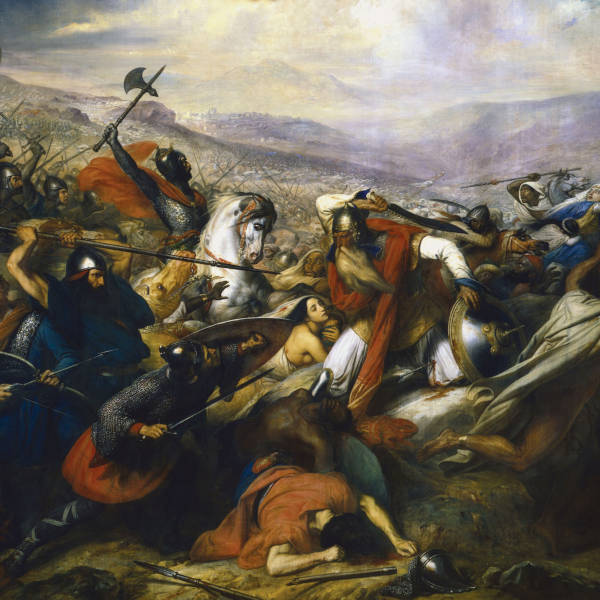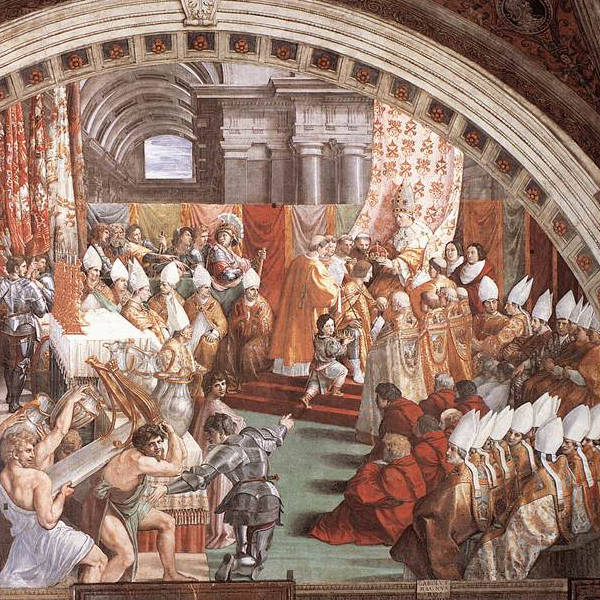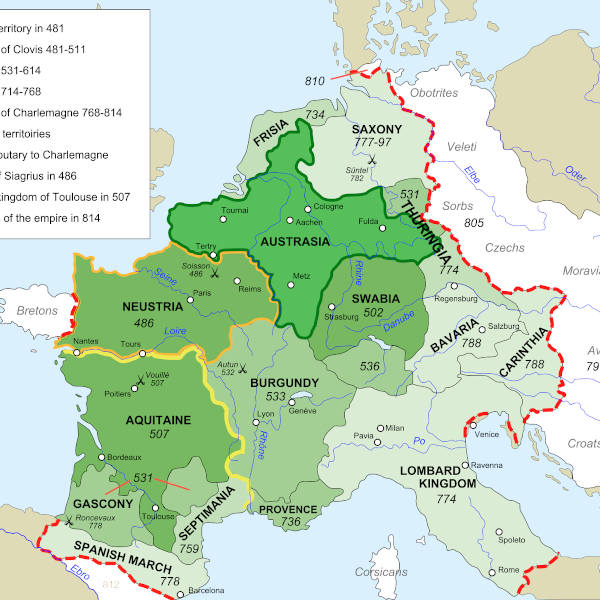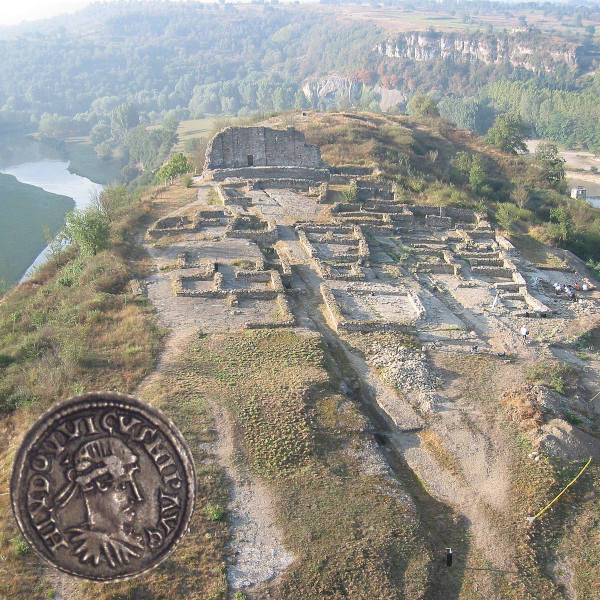DNA spotlight
Carolingian Empire

The Carolingian Dynasty was a family of Frankish rulers who established rule over Western Europe after the weakening of the Merovingian kings. Their story begins in 718 AD when a man named Charles Martel (a.k.a. Charles the Hammer) became Duke of the Franks serving the puppet Frankish king Chilperic II. This King died in 720 AD and replaced by Theodoric IV who Charles had appointed himself. By 730 AD the Frankish kingdom grew as Charles conquered many of the German peoples to the East. The Duchy of Aquitaine had broken off and was struggling with its southern neighbor, the Umayyad Caliphate - which was until then the largest and wealthiest empire ever assembled. The Duke of Aquitaine asked Charles for help in exchange for submission to his rule. At the famous battle of Tours, the Franks had a decisive victory against the Caliphate and by 740 AD they were no longer a critical threat to Francia. After the puppet king Theodoric IV died, Charles did not replace him but also did not declare himself King. Upon Charles Martel's death his empire was split between his two sons - Pepin and Carloman.

In 743 AD, Pepin and Carloman appointed a new powerless king to fill the vacancy - Childeric III. In 747 AD Carloman renounced his title and became a monk leaving Pepin as the soul ruler. He decided to remove the fake king from power and declared himself King Pepin III, the first king of the new Carolingian Dynasty named after his father Charles. Pepin died in 768 which divided his kingdom beteen his two sons, Charlemagne (Carolus Magnus or Charles the Great) and Carloman I. In 771, Carloman I died of natural causes conveniently enabling Charlemagne to assume sole control of Francia. Charlemagne began a campaign of expansion and began by a successful campaign against the pagan Saxons. He then proceeded to conquer the Lombards, but the Saxons remained relentless under their leader Widukind. By ordering the execution of 4000 Saxon prisoners, Widukind's hand was forced and he accepted baptism in 785 AD. Shortly thereafter Charlemagne conquered much of central and southern Italy as well as Bavaria which put the Franks in contact with the very wealthy Avars.

In 785 Charlemagne began an invasion of Girona and by 799 AD he had conquered Barcelona. By 800 AD Francia was a large empire so became better known as the Carolingian Empire. The running of the Kingdom revolved around the Royal Court which revolved around various administrative palaces, the most notable being in Aachen, Germany. The territory was divided into Counties known as Missatica which were inspected by Charlemagne's emissaries known as Missi Dominici (often a bishop and a count) who would ensure the king's authority remained intact. He focused on numerous church reforms and ensured ecclesiastical power remained intact. Pope Leo III was under threat from his enemies so Charlemagne came to his rescue and was declared Imperator Romanum (the Roman Emperor) - making him the first Emperor of the West since the collapse of the Western Roman Empire. He also saw the learning was revived across the Empire beginning the Carolingian Renaissance. Scholars assembled and schools were established around the kingdom. In 805 he continued his reign of conquest and conquered Bohemia - and was recognized by the Byzantines as the rightful Emperor of the West.

These samples date from Charlemagne's conquest of Iberia known as the Hispanic Marches where the north-eastern territory of the Visigothic kingdom of Hispania was added to Francia, after having been previously conquered by the Umayyad Caliphate. Explicitely this includes the 785 invasion of Girona and the 797 invasion of Barcelona. A number of castles were established between 798 and 802. The local population of this region was diverse - it included Basques, Hispano-Romans (Goths), Muslims and Jews. These Carolingian samples are from an archaeological site called L'Esquerda in the Province of Barcelona which was a Carolingian settlement built over the ruins of an older Iron Age fortress. Archaeological evidence shows post holes and rock cuts indicating the presence of wooden watchtowers as well as incorporation of a previously built Visigothic defensive wall. L'Esquerda is strongly defended by its natural cliffs overlooking the Ter River and served as a key strategic location. A Carolingian coin depicting Louis the Pious, son of Charlemagne and later co-Emperor was found among many shards of fine Carolingian pottery at the site.
Sample: Carolingian Settlement Barcelona
- Sample ID: I7672
- Year: 790 AD
- Sex: Male
- Location: 41.9830,2.302
Sample: Carolingian Settlement Barcelona
- Sample ID: I7673
- Year: 790 AD
- Sex: Female
- Location: 41.9830,2.302
Sample: Carolingian Settlement Barcelona
- Sample ID: I7674
- Year: 797 AD
- Sex: Female
- Location: 41.981377,2.309824
Sample: Carolingian Settlement Barcelona
- Sample ID: I7675
- Year: 790 AD
- Sex: Male
- Location: 41.9830,2.302
Sample: Carolingian Settlement Barcelona
- Sample ID: I7676
- Year: 790 AD
- Sex: Female
- Location: 41.9830,2.302
